
UNIQUE HIDDEN HEROES AFTER-WAR MEMORIAL AT TALLY HO FARM WINKFIELD SL4 4RZ ENGLAND
 UNIQUE HIDDEN HEROES AFTER-WAR MEMORIAL AT TALLY HO FARM WINKFIELD SL4 4RZ ENGLAND |
| Why we should give thanks - even for lessons learned the hard way | |
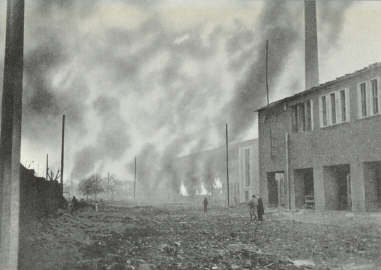


|
|
ABOUT 'BLACK THURSDAY' |
||
|
BEFRIENDING FLY2HELP & ROSIE
SCHWEINFURT RECONCILED 1943-2014
|
WHAT HAS BEEN CALLED the bloodiest ever aerial
battle took place on Thursday 14th October 1943. The USAAF launched nearly 300 planes to attack the ball-bearing factories in the town on Schweinfurt in central Germany. They had already made one raid in the previous August, and suffered heavy losses to German fighters and anti-aircraft fire. On this occasion, part of the force sent out attacked the aircraft factory at Regensburg before flying south to North Africa. On 14 October, the bombers had a fighter escort as far as Aachen, the border between Holland and Germany. What then followed was hours of running battle against about 500 German fighters. It was said that every sort of plane was seen by the bombers - some trailing bombs, others firing rockets. The flak was again heavy and took its toll. In all, 59 B17s were lost over over Germany, France and Holland, and another 17 damaged so badly that they would never fly again. Only 50 planes received no damage. The losses led to a reconsideration and pause in USAAF deep penetration raids on targets in Germany. In the Spring of 1944, the P40 Mustang became available for long-range escort duties - as far as Berlin, in fact. In addition, the P38 Thunderbolt acquired better long-range tanks. Many of the B17s were the G model, with a chin turret firing forward to counter the head-on attacks favoured by many Luftwaffe fighter pilots. The damage to the bal-bearing factories was again considerable, but not crucial. Production had been dispersed and supplies stockpiled. One main effect of the USAAF campaign was the attrition of Luftwaffe fighter pilots throughout 1944. Schweinfurt was raided several times more, and over a thousand civilians were killed. The US Army established a big garrison in Schweinfurt, and many US servicemen settled in the area. With the run-down of the Cold War, the garrison is being readied for closure in mid-2014. |
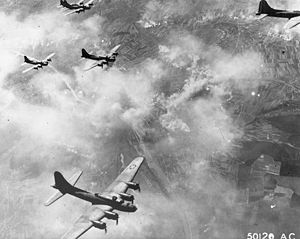 Overhead Schweinfurt in August 1943  On the ground at the Kugelfischer factory that afternoon  Schweinfurt today
|
| The target for 14 October | |
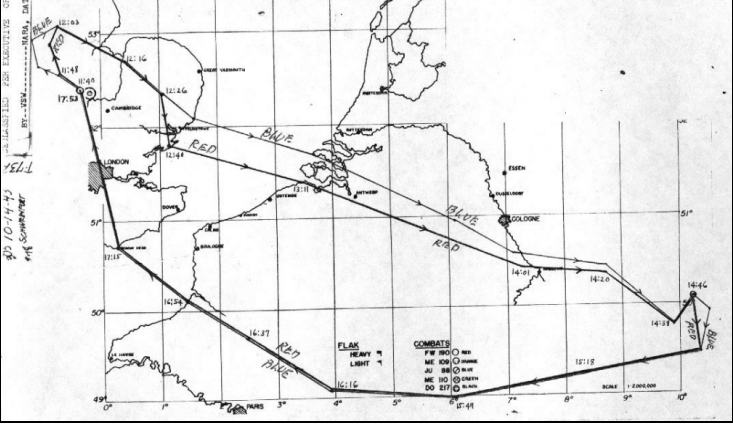 |
| Some Operational Plan details | ||
|
"This air division today is the most important air operation yet conducted in this war. The target must be destroyed. It is of vital importance to the enemy. Your friends and comrades that have been lost and that will be lost today are depending on you. Their sacrifice must not be in vain. Good luck, good shooting and good bombing." That was the pre-mission call by General Anderson. You can see it as part of the detailed official plan and report for the day available on line courtesy of the 92nd Bomb Group Memorial Association at http://92ndma.org/missions/43o14schweinfurt.htm The plan shows the round-trip distance from Orfordness to Beachy Head as 833 nautical miles and the duration as 274 minutes. The big formation took time to assemble, but Zero Hour for the first plane overhead Orfordness was set for 12.30pm. The formation was due to fly at 21-23000 ft, descending over the Channel to cross Beachy Head at 9000 ft - dispersing to their home bases after passing London. In the event, the low cloud, poor visibility and gathering darkness forced the groups to break up as they returned. The planned fighter escort of Spitfires was not seen. The weather at many bases was bad, and some planes turned south in search of an airfield or anywhere that looked safe to land. (Just 30 minutes after our B17 crashlanded at Winkfield, another got safely into a field at Shiplake, about 10 miles west). "Don't send us far inland without fighter support all the way" was a common observation in the official report. In all, OF THE 92ND BOMB GROUP FROM PODINGTON - 21 B17s set off - 3 aborted the mission - 6 were missing in action - 3 planes made it back to base that day - 7 returned after landing at other bases - 1 crashlanded and was recovereable - 1 (#3351Z) crashlanded and burned up OF THE 351 USAAF PLANES OF THE 8TH AIR FORCE THAT SET OFF - 85 Aborted or were not on hand on reaching the German frontier - 228 B17s attacked Schweinfurt between 1439 and 1457 - 60 aircraft were lost to fighters or flak (over 20%) - a further 17 could not fly again - 121 had varying degrees of battle damage - over 650 men were lost, and over 40 came back wounded - just short of 700 rounds of .5" ammunition were expended |
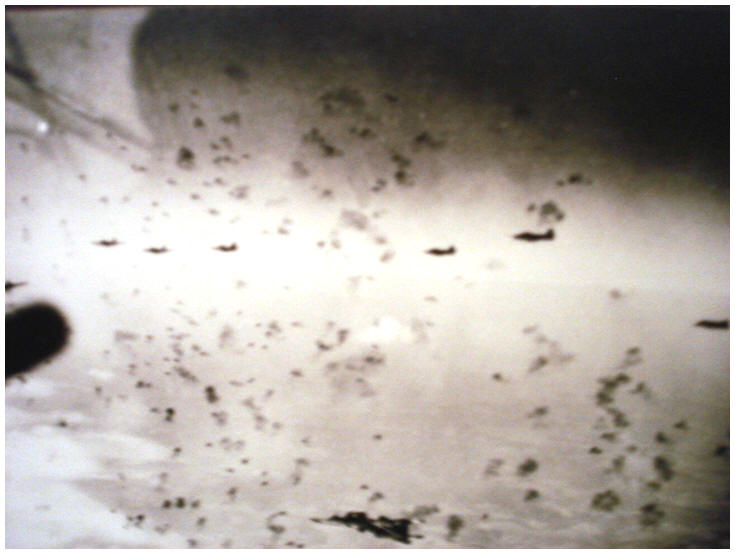 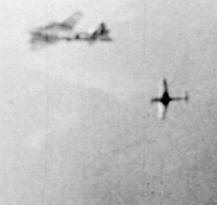 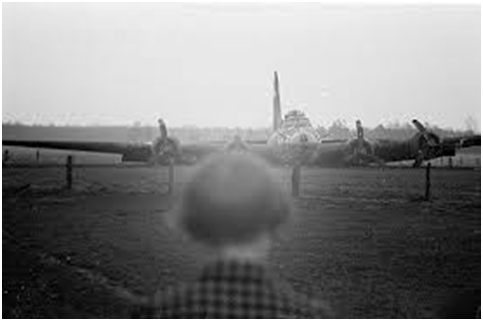 Downed in Germany  Home but hurt |
|
|
BEFRIENDING FLY2HELP & ROSIE
SCHWEINFURT RECONCILED 1943-2014
|
||